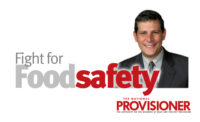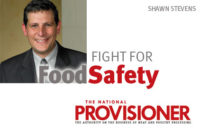In the 25 years I have been representing and defending the food industry, I have witnessed some spectacular industry accomplishments and a few notable failures. Fortunately, over this lengthy period, the stunning accomplishments have far outweighed the few times where industry did not find success. As I look back on those last 25 years, and look forward to the next, one conclusion I am very comfortable making is that we are truly blessed to have the safest food supply in the entire world.
To test this conclusion, and while preparing to write this article, I used out dataset (www.foodrecallreporter.com) to detail the numbers of recalls of USDA-regulated products over the last 25 years for the suspected presence of pathogenic E. coli. What I observed was a testament to the amazing work that food scientists and professionals have done to identify, tackle, and then solve the once-persistent issue of E. coli contamination in raw meat products.
Where did it all start? Well, with the 1993-94 Jack-in-the Box outbreak, of course. What followed were new policies in 1994 declaring E. coli O157:H7 to be an adulterant in ground beef, the imposition in 1999 of HACCP on the beef industry, and the unveiling, at the same time, of CDC’s PulseNet, allowing for the realtime detection of emerging foodborne illness outbreaks.
What followed, quickly began to turn everyone’s head, including consumers, media, and the regulators. Indeed, in the few short years between 2000 and 2003, there were more than 100 recalls of raw meat products for the presence of E. coli O157:H7. Unfortunately, some of those recalls were triggered by foodborne illness outbreaks which were, in most cases, linked back to the offending products.
During those early years (and, in the years that followed), I staunchly defended beef companies accused of causing foodborne illness outbreaks in cases that were both threatened and/or filed throughout the U.S. Indeed, Bill Marler and I got to know each other very well. And, as the years churned on, and the cases continued to be filed by plaintiff lawyers, I continued to watch in awe as the beef industry worked tirelessly to find solutions to the E. coli O157:H7 conundrum. At first, the hard work did not yield impressive results. While the stats were getting better than what was observed just a few years earlier, there were still 78 recalls, between 2007 and 2011, because of the presence of E. coli O157:H7 in raw beef.
Then, in 2011, FSIS changed the rules further, declaring that the presence of “The Big Six” Non-O157 STECs (E. coli O26, O11, O103, O121, O45 and O145) in ground beef would render the products adulterated. Notably, however, because the presence of these other E. coli strains typically had the same underlying cause as O157, industry’s ongoing strategies to combat E. coli generally did not change much.
But, what did change, in the years that followed, was the prevalence of E. coli in raw ground products. Industry’s interventions and strategies were finally beginning to pay off. From 2012 to 2019, there were only, on average, five recalls of raw beef for the presence of E. coli O157:H7 each year. And the success continued. During the four-year period between 2020 and the date of this article, the suspected presence of E. coli O157:H7 has only triggered a total of seven recalls. Oh my, how times have changed!
So, as I often do, I would like to take a moment to reflect on our journey together, and thank industry for such a phenomenal accomplishment. E. coli was once a glaring distraction in industry’s windshield and, through persistence and hard work, it is now fading further and further away in the rearview mirror.





Report Abusive Comment